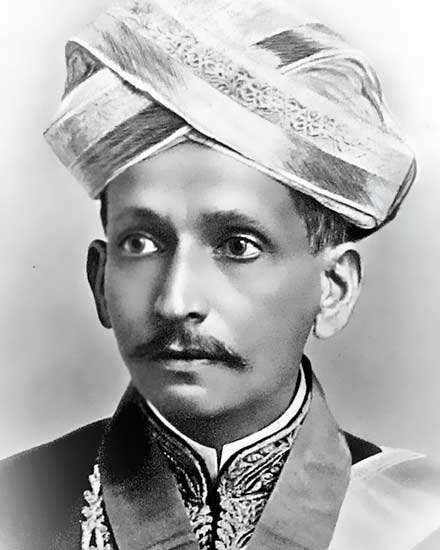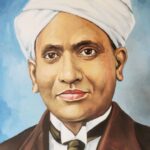M. Visvesvaraya: 7 Revolutionary Contributions That Shaped India’s Infrastructure
M. Visvesvaraya, a legendary engineer and statesman, is widely recognized as one of the greatest architects of modern India’s infrastructure. His contributions to engineering, urban planning, and the development of India’s industrial infrastructure have left an indelible mark on the country. With his extraordinary vision, innovative ideas, and dedication to nation-building, Visvesvaraya played a key role in shaping India’s economic and industrial growth. His life story is a testament to the power of education, hard work, and a commitment to serving society.
M. Visvesvaraya Early Life and Education
Born on September 15, 1861, in Muddenahalli, a small village in present-day Karnataka, M. Visvesvaraya came from a humble background. His father, a school teacher, instilled in him a love for learning, and Visvesvaraya was an excellent student from an early age. He graduated in arts from the Government College in Bangalore, but his passion for engineering led him to pursue further studies at the College of Engineering, Pune (then known as the Poona Engineering College), where he earned his degree in civil engineering.
Visvesvaraya’s early education was a stepping stone to his later achievements. His thirst for knowledge was not confined to his academic studies alone. He was also deeply interested in understanding the country’s economic and industrial development and how engineering could play a role in building a stronger nation.
M. Visvesvaraya Major Contributions and Achievements
1. Role in the Construction of the Krishna Raja Sagara Dam
One of Visvesvaraya’s most significant achievements was his contribution to the construction of the Krishna Raja Sagara (KRS) Dam in Karnataka. This dam, built across the Kaveri River, was a major milestone in India’s water management efforts. Visvesvaraya’s visionary engineering solutions, which included the creation of an innovative irrigation system, made it possible for the dam to store large quantities of water for irrigation and power generation. The KRS Dam continues to serve as a critical water source for farmers in Karnataka, demonstrating Visvesvaraya’s far-reaching impact on India’s agricultural sector.
2. The Concept of Water Conservation and Irrigation Systems
M. Visvesvaraya was a pioneer in advocating for the efficient use of water resources. His work on water conservation and irrigation systems transformed the way India approached agriculture. He designed several water supply systems that improved irrigation facilities in areas suffering from water shortages. His ability to identify water management challenges and develop sustainable solutions helped boost agricultural productivity in India and improve the lives of countless farmers.
3. The Development of Hyderabad’s Infrastructure
In addition to his work in Karnataka, Visvesvaraya played a significant role in transforming the infrastructure of Hyderabad. He was appointed the Diwan (Prime Minister) of the Kingdom of Mysore in 1912, and during his tenure, he contributed to the development of the city’s infrastructure. One of his notable contributions was the construction of an irrigation system to supply water to the city and nearby areas. His visionary urban planning efforts in Hyderabad laid the foundation for the city’s growth into a major metropolitan hub.
4. Establishment of the Mysore Iron and Steel Works
Visvesvaraya’s contributions to industrial development are equally remarkable. He recognized the importance of industries in driving economic growth and played a pivotal role in the establishment of the Mysore Iron and Steel Works (now known as the Visvesvaraya Iron and Steel Plant). His efforts were instrumental in ensuring that India could produce its own steel and other essential materials. This plant became an important part of the country’s industrial infrastructure and contributed significantly to the growth of India’s manufacturing sector.
5. Modernization of Indian Railways
Visvesvaraya also played a key role in modernizing India’s railway system. He introduced new technologies and methods to enhance the efficiency and safety of the railway network. He was particularly focused on improving the design of railway tracks and bridges, ensuring that they were more durable and capable of handling the growing demands of the nation’s transport system.
6. Champion of Industrial Development
Visvesvaraya was not only a great engineer but also a visionary who understood the importance of industrial development for a nation’s economic prosperity. He advocated for the establishment of industries and the creation of skilled labor forces to drive economic growth. His work laid the groundwork for industrialization in India and helped shape the country’s approach to modern infrastructure development.
7. His Role in Education and Public Welfare
M. Visvesvaraya was deeply committed to improving education and public welfare. He believed that education was the key to national progress and advocated for the establishment of educational institutions that could provide quality education in science, engineering, and technology. Visvesvaraya himself was a teacher and a mentor to many budding engineers, and he encouraged his students to embrace innovation and contribute to the nation’s development.
M. Visvesvaraya Daily Life and Philosophy
M. Visvesvaraya was known for his disciplined lifestyle and dedication to his work. Despite his busy schedule as an engineer and statesman, he always made time for study, reflection, and the pursuit of knowledge. He was known for his meticulous attention to detail and his methodical approach to solving problems.
Visvesvaraya believed in the importance of practical knowledge and hands-on experience. His work was rooted in his ability to apply theoretical knowledge to real-world problems. He once famously said, “The way to develop a nation is to work with sincerity, discipline, and by applying knowledge to solving the real problems that exist in the society.”
His commitment to public service and his passion for the nation’s progress made him an exemplary role model for generations of engineers and leaders. Visvesvaraya’s approach to problem-solving was based on logic, innovation, and practicality, which made him a highly respected figure both in India and abroad.
Significance and Impact on Society
M. Visvesvaraya’s contributions to India’s infrastructure, water management, and industrial development have had a lasting impact on the country. His visionary ideas continue to influence the development of modern infrastructure in India, and his focus on education and industrialization played a key role in shaping the nation’s economy.
Visvesvaraya’s legacy as an engineer and statesman is celebrated every year on his birthday, September 15, which is observed as Engineers’ Day in India. This day serves as a reminder of his monumental contributions to the country and is celebrated by students, professionals, and institutions across India. Engineers’ Day is a day to recognize the work of engineers and promote the importance of engineering in solving societal challenges.
FAQs About M. Visvesvaraya
1. What is M. Visvesvaraya known for?
M. Visvesvaraya is known for his pioneering contributions to India’s infrastructure, water management, industrial development, and engineering education. His most notable achievements include the construction of the Krishna Raja Sagara Dam and the establishment of the Mysore Iron and Steel Works.
2. When is Engineers’ Day celebrated in India?
Engineers’ Day is celebrated on September 15, the birthday of M. Visvesvaraya, to honor his contributions to engineering and infrastructure development in India.
3. What was Visvesvaraya’s role in the Mysore Iron and Steel Works?
Visvesvaraya played a key role in the establishment of the Mysore Iron and Steel Works, which was one of the first steel plants in India. His efforts helped India produce its own steel and contributed to the country’s industrial growth.
4. How did Visvesvaraya contribute to the development of Hyderabad?
Visvesvaraya contributed to the development of Hyderabad by designing and implementing an efficient irrigation system to supply water to the city and surrounding areas.
5. What was Visvesvaraya’s philosophy of life?
Visvesvaraya believed in discipline, innovation, and applying practical knowledge to solve real-world problems. He was committed to the progress of India through education, industrialization, and the development of infrastructure.
Conclusion: M. Visvesvaraya
M. Visvesvaraya’s remarkable contributions to the development of India’s infrastructure, industrialization, and education have earned him a place among the greatest engineers and statesmen in the country’s history. His legacy continues to inspire engineers, policymakers, and leaders, and his vision of a modern, prosperous India remains a guiding light. As we celebrate Engineers’ Day every year, M. Visvesvaraya’s life and work serve as a powerful reminder of the difference that one dedicated individual can make in the world.










